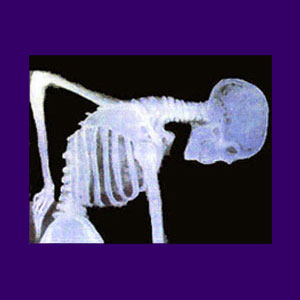
Chronic pain syndrome is a rather vague diagnosis which is often declared when a patient demonstrates a tremendous amount of long lasting and structurally illogical symptoms without definitive cause. In some circumstances, the diagnosis is made when structural issues may be the underlying causation, but symptoms do not correlate clinically, or previous treatment attempts have since resolved the structural issues, yet the pain remains or even worsens. In the case of chronic back pain, these are all possible scenarios, since most patients with severe and ongoing pain do not find relief, despite a positive diagnosis, particular treatment or even surgical intervention.
This article examines CPS; a diagnosis that leads nowhere, except to cause many possible hardships for the patient.
What Exactly is Chronic Pain Syndrome?
CPS is a diagnosis which often infuriates the recipient. This is due to the lack of understanding of the condition, most often on the part of care provider and patient alike. CPS can be linked to yet undiagnosed structural issues in some cases. In other cases, CPS is theorized to exist due to nerve damage, scar tissue or any number of other (typically) scapegoat issues which can not and will not ever be proven to exist.
CPS is sometimes known as a cop-out diagnosis, often made by a doctor who simply has had enough of a patient and tries to free themselves from further bother by using a diagnosis which says nothing and holds little hope for improvement. In many cases, the syndrome is linked to psychological factors, which may be perfectly accurate. However, due to a misunderstanding of psychosomatic conditions, the patient is often insulted by this diagnosis and the doctor often truly does not even understand its exact implications.
Chronic Pain Facts
CPS can be due to undiagnosed or misdiagnosed structural issues. However, in these cases, it is not CPS. It is a medical mistake. This is pure iatrogenesis. When linked to scar tissue or nerve damage due to failed surgery and the like, once again, the diagnosis really does not apply. The real diagnosis should be something like…
“When we operated on you, we damaged you. It was our fault and sorry, you will never be the same.”
I have never heard this kind of accountability in the back pain industry, so the CPS diagnosis works much better to save a doctors ego (and limit legal liability).
Being labeled with CPS should be the real insult to any patient, since it says nothing, does nothing to help and justifies doctors in pursuing profitable and dangerous treatment that will likely provide little relief according to all accepted patient statistics.
Chronic Pain Syndrome Consequences
In many cases, chronic pain is a result of the psychosomatic process, but not in the way perceived by most people. Psychosomatic pain is 100% real and is in no way different than structurally-induced pain in its experience. The only difference at all is the causation being in the mind, rather than the body.
Patients with psychosomatic pain are not responsible for their suffering in most cases, with the best example being primary gain back pain, nor can they stop the pain from occurring without targeted help, such as that offered by knowledge therapy. The reason insult is associated with psychosomatic pain is the inference of secondary gain. This means that the patient may know the pain is not structural, but insists on the physicality of the syndrome in order to derive benefit from the symptoms… access to drugs, shirking responsibility or trying to get money via litigation are the most common theories for secondary gain.
In my experience as a former trial preparation investigator and long time back pain scholar, secondary gain is rare in the patient population. No wonder patients hate to hear the word psychosomatic.




